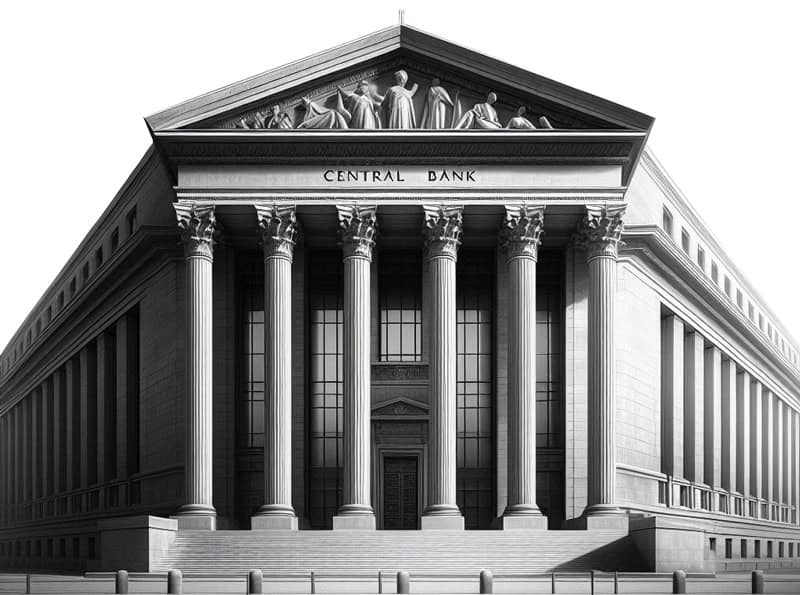ZZap counterfeit detectors are designed to verify bills quicker and more effectively than the most experienced cashier. Before we look into how they work, lets look at why counterfeiting is a real threat to your business.
How Do ZZap Counterfeit Detectors Work
Counterfeits In Circulation
The history of counterfeit money is almost as old as currency itself. In absolute terms the United States Dollar is the most counterfeited currency in the world. Percentage-wise the British Pound is the most counterfeited currency. The number of counterfeit bills in the Euro zone has also steadily risen each year since its introduction in 2002.
The Affect Of Counterfeiting On Businesses
Counterfeit bills are worthless. If you accept a counterfeit there is no compensation available. Counterfeiting is estimated to have cost the EU over €500 million since the Euro was first introduced. Counterfeit detectors often detect far more counterfeits than the value of the device making them a great return on investment.
*Central Bank Certified
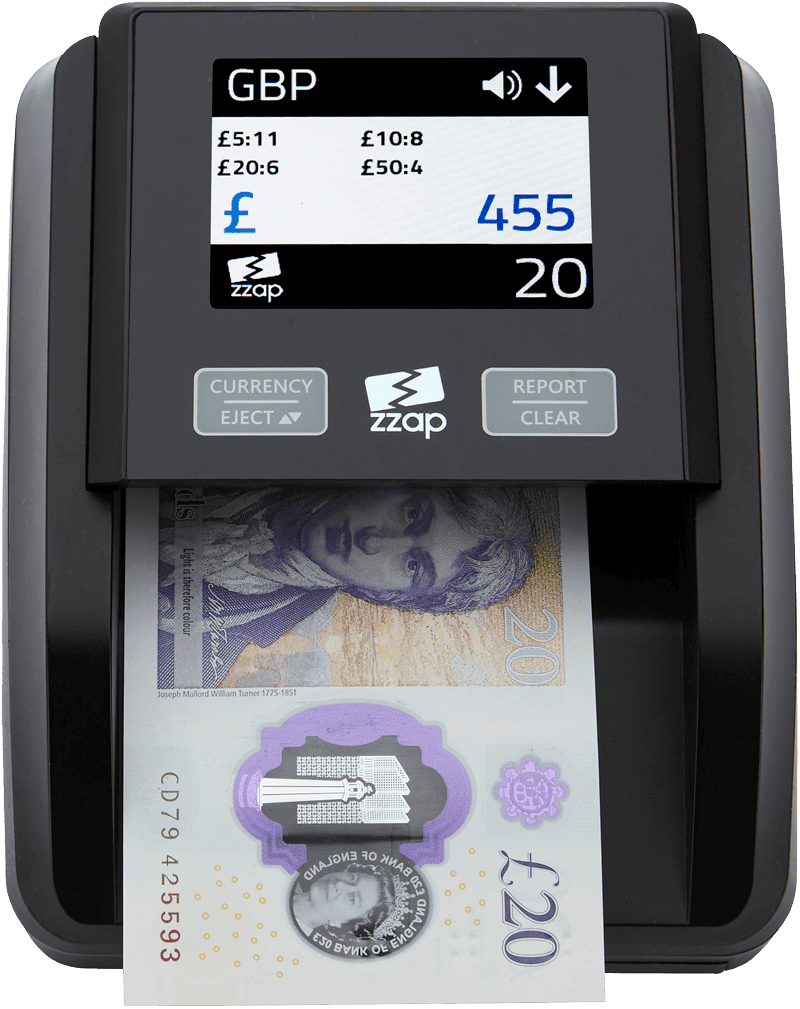
Bill Security Features
Central banks integrate security features into bills to protect them from counterfeiting. Counterfeit detectors check the security features to verify the bill. There are security features such as ultraviolet, magnetic and size that can be checked with simple devices such as the ZZap D20, then there are advanced security features such as colour, image, infrared and metal thread that can only be checked with sophisticated devices such as the ZZap D40. The more security features that are checked, the more accurate the counterfeit detection will be.
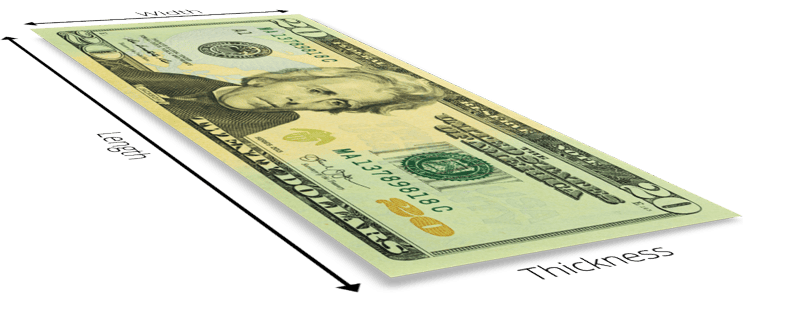






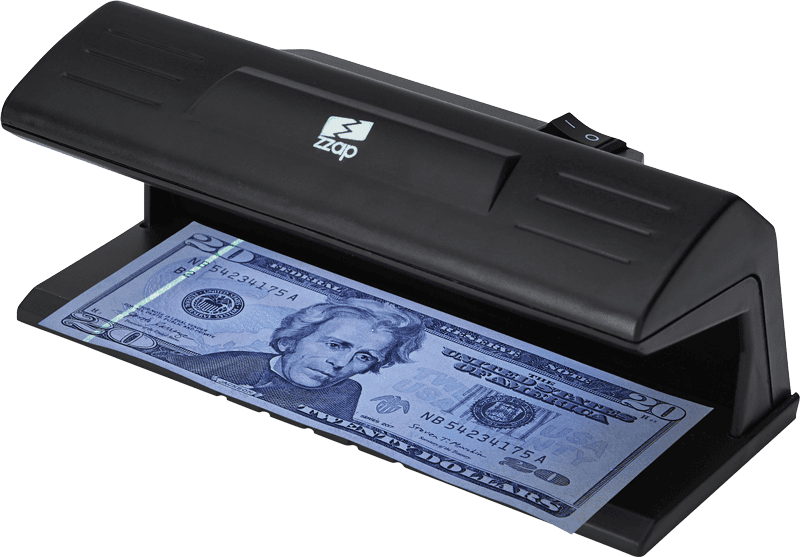
How Ultraviolet Light Detection Works
Bills and some official items incorporate invisible UV marks that only become visible when under ultraviolet light at a wavelength of 365 nanometres. ZZap counterfeit detectors such as the ZZap D20 make UV marks instantly distinguishable so that you can visually verify them. Advanced counterfeit detectors such as the ZZap D40 automatically verify UV marks using UV and photonic sensors.
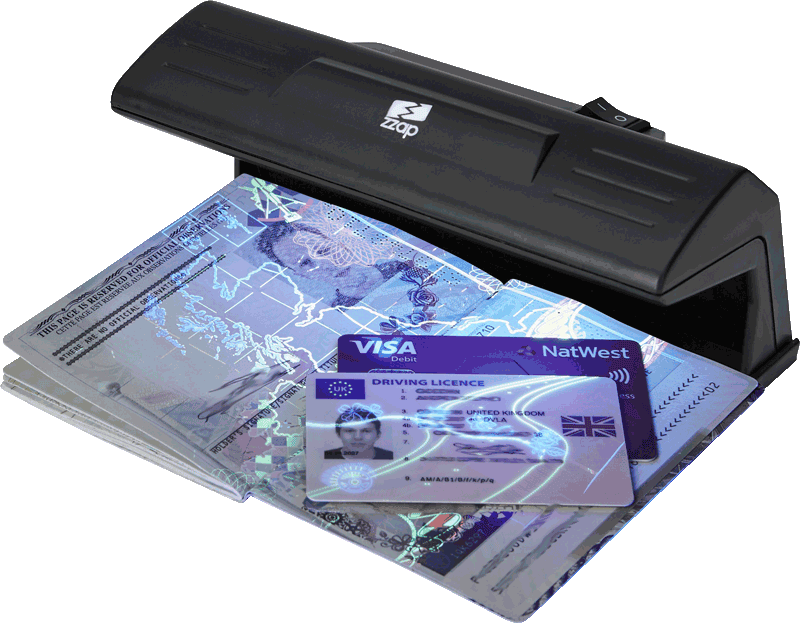
How Magnetic Detection Works
Ferromagnetic ink is printed on bills in complex magnetic patterns. Metal thread is also weaved into bills in specific sizes and locations. Manual magnetic detectors such as the ZZap D30i can quickly identify simple fakes that don’t contain magnetic ink or thread. However advanced counterfeit detectors such as the ZZap D40 can detect sophisticated counterfeits by identifying the specific ink and thread patterns by using various magnetic sensors.
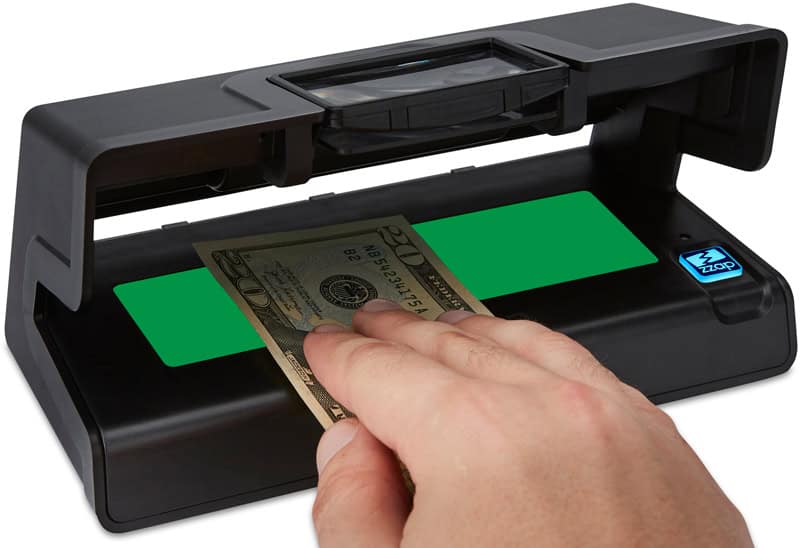
How Infrared Detection Works
Bills are printed with inks that are invisible to the naked eye but display special characteristics under infrared light. Counterfeit detectors such as the D40 use infrared reflecting and absorbing sensors to automatically verify the specific infrared characteristics unique to each denomination.
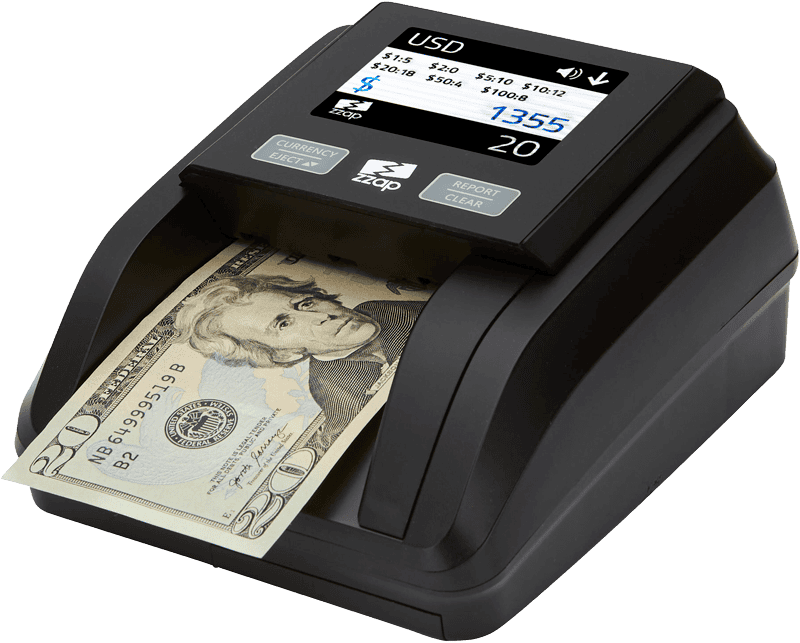
How Size Detection Works
Each bill denomination has exactly the same length, width and thickness. High-end counterfeit detectors such as the ZZap D40 use pulsing LED transceiver pairs and infrared sensor banks to verify these dimensions down to a tenth of a millimeter.
Verifies Bill Size Down To
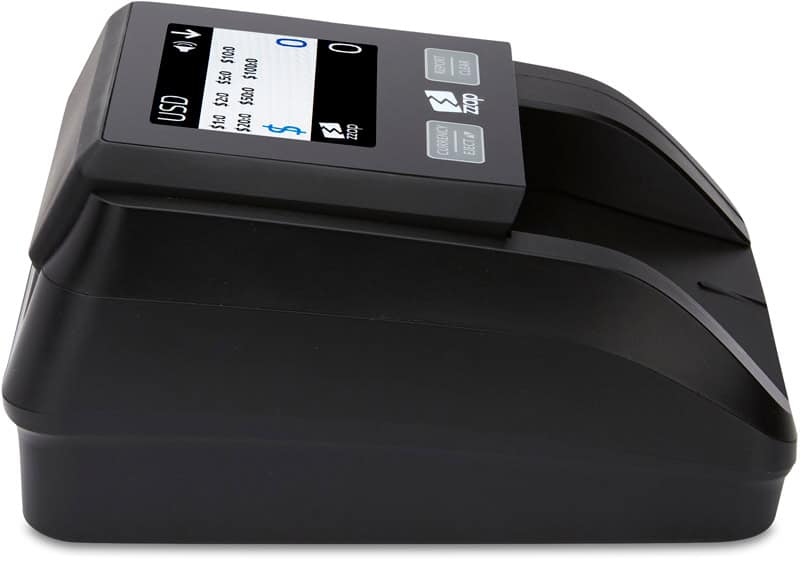
How Spectrum Analysis Works
Complex patterns are printed on bills using specialist coloured inks. Each denomination has its own unique pattern. High-end counterfeit detectors such as the ZZap D40i scan the bill using a highly sensitive spectrum sensor. The scanned image is then compared with the correct image stored in the memory.

What Central Bank Certified Means
Central banks such as the Bank of England, European Central Bank and many others, have a vast knowledge of the counterfeiting techniques used in today’s society. Central banks test cash handling products with a wide range of counterfeit bills. If the product successfully identifies all the counterfeit and genuine bills, the product is Central Bank Certified. To keep pace with counterfeiting techniques, eligible ZZap products are tested on an annual basis.
